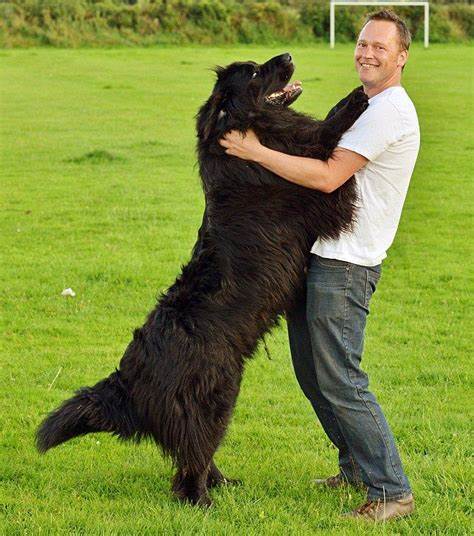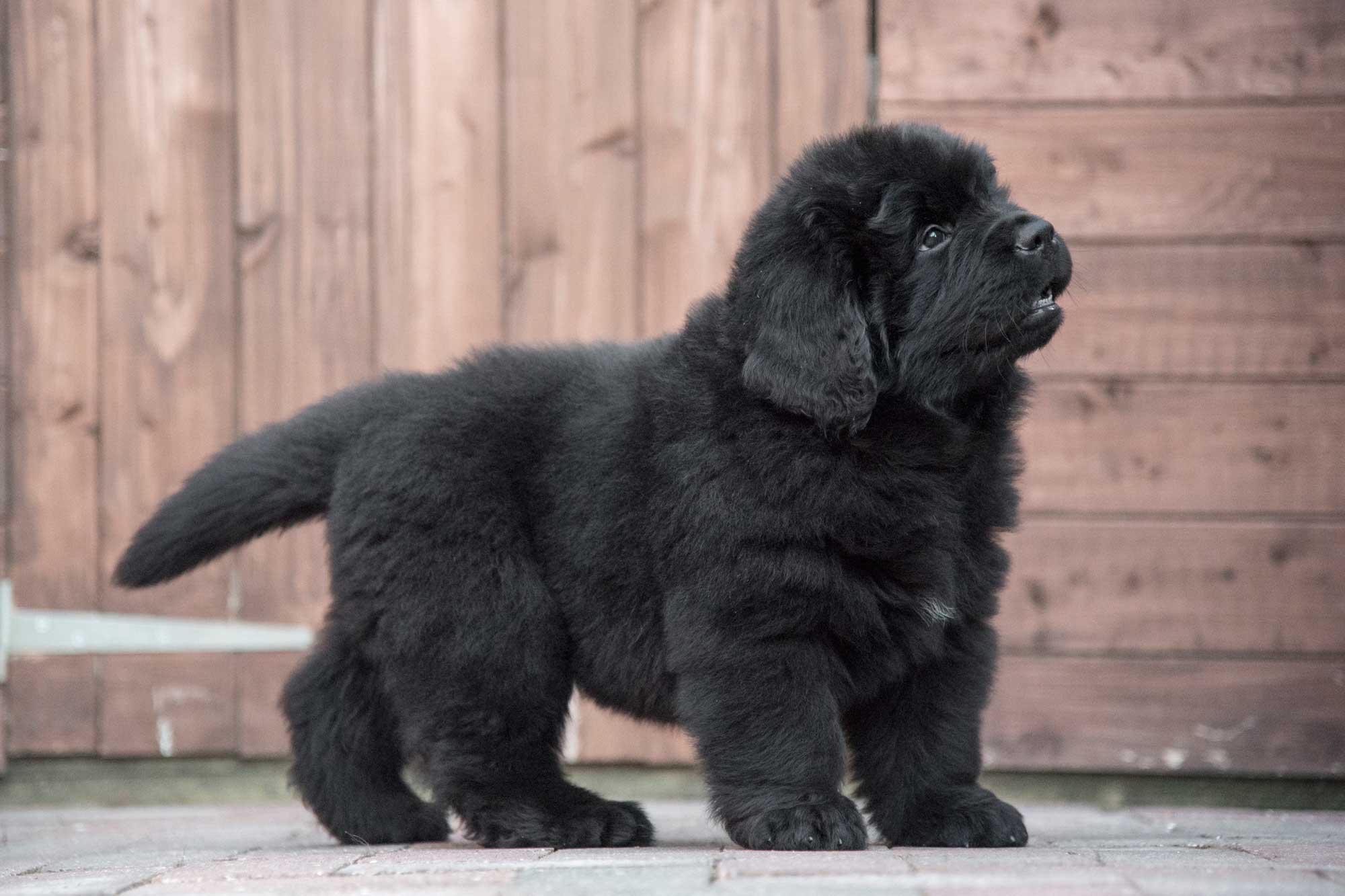
The Newfoundland, often affectionately called a “Newfie,” hails from the Canadian island of Newfoundland. It was developed to work alongside fishermen in the North Atlantic. The breed’s ancestry likely includes a mix of large working dogs brought over by European fishermen (such as the Great Pyrenees or Mastiff-types) and native water dogs.
These dogs were essential partners: hauling nets, pulling carts, retrieving items from water, and even rescuing people from drowning. Their impressive strength, swimming ability, and lifesaving instincts earned them a heroic reputation. The breed was recognized by the American Kennel Club (AKC) in 1886 and remains a symbol of strength, sweetness, and water-rescue capability.
The Newfoundland’s combination of imposing size, gentle temperament, and strong loyalty has made it a favorite among families and dog lovers worldwide. It is particularly cherished in Canada and the United States and is often featured in stories of bravery and rescue. Their appearance in literature, such as the beloved "Nana" from Peter Pan, has only added to their enduring charm.
The Newfoundland is a massive, heavily coated working dog built for power and endurance in cold water.
Coat:
Double coat with a coarse, water-resistant outer layer and a soft, dense undercoat. They shed year-round, more heavily seasonally.
Color:
Black is the most common, but they also come in brown, gray, and Landseer (white with black markings).
Size:
• Height: 26–28 inches (males), 24–26 inches (females)
• Weight: 120–150 lbs (males), 100–120 lbs (females)
Build:
Massive and muscular, with a broad chest, strong back, and thick tail that aids in swimming.
Head:
Large, broad skull with a soft expression. Eyes are dark brown and set wide apart. The ears are small and lie close to the head.
Feet:
Webbed toes make the Newfoundland an expert swimmer.
Despite their size, Newfoundlands are famously sweet-natured and calm. They are often called “gentle giants.”
Gentle and Tolerant:
Incredibly patient and loving with children—often described as having a nanny-like temperament.
Loyal and Devoted:
Form strong bonds with their family and are deeply protective without being aggressive.
Natural Lifesavers:
Have a deep instinct to rescue in water. Many have saved lives, even without training.
Low-Drive Indoors:
Calm and relatively inactive indoors but require regular outdoor activity to stay healthy.
Trainable and Eager to Please:
Intelligent and willing, though sometimes slow to mature mentally. Positive reinforcement works best.

• Family-Friendly:
Excellent choice for families, especially with kids. They are watchful and affectionate without being overly excitable.
• Great Swimmers:
Perfect for owners who live near water or enjoy outdoor adventures.
• Imposing Yet Gentle:
Their size can deter intruders, yet their temperament makes them safe around all ages.
• Heroic Heritage:
Few breeds have such an established legacy of water rescue and lifesaving work.
• Quiet Companions:
Not known for excessive barking. They tend to be calm, steady presences in the home.
Training:
Start early and be consistent. Socialize thoroughly and use gentle methods.
Exercise:
Moderate exercise is essential—daily walks, swimming, or light work keeps them fit.
Grooming:
Weekly brushing is necessary to control shedding. More frequent grooming during seasonal molts. Clean ears and check for moisture buildup.
Diet:
Feed a balanced diet suited to large or giant breeds. Watch for weight gain, which stresses joints.
Living Conditions:
Needs space—best in homes with a yard. Can adapt to indoor living if given enough exercise.

Newfoundlands are generally healthy but, like many giant breeds, have some genetic predispositions.
Lifespan: 8–10 years
Common Health Concerns:
• Hip and elbow dysplasia
• Subvalvular aortic stenosis (SAS) – a serious heart condition
• Cystinuria – a kidney-related disorder
• Gastric torsion (bloat)
• Obesity
Always work with a breeder who screens for these conditions and commits to responsible breeding.
Compared to the Bernese Mountain Dog:
Both are large, gentle, and family-oriented. Newfoundlands tend to be calmer and more water-inclined, while Berners are slightly more active and excel in dry-land tasks.
Compared to the Saint Bernard:
Saint Bernards share the size and family-friendly nature but are more drooly and less water-inclined. Newfoundlands are typically more agile swimmers.
Choose this breed if you:
• Want a gentle, loyal giant for your family
• Live near water or enjoy water-based activities
• Can handle grooming and potential drool
• Have room for a large dog
• Appreciate calm, laid-back personalities
Not Ideal For:
• Small homes or apartments
• People with limited time for grooming or cleaning drool
• Owners who prefer a high-energy dog
• Those who dislike shedding or large breeds
United Pet Club can help match you with reputable breeders, provide grooming tips, and connect you with dog trainers who understand the special needs of giant breeds like the Newfoundland. With our resources, your Newfie can thrive in health, happiness, and heroism.